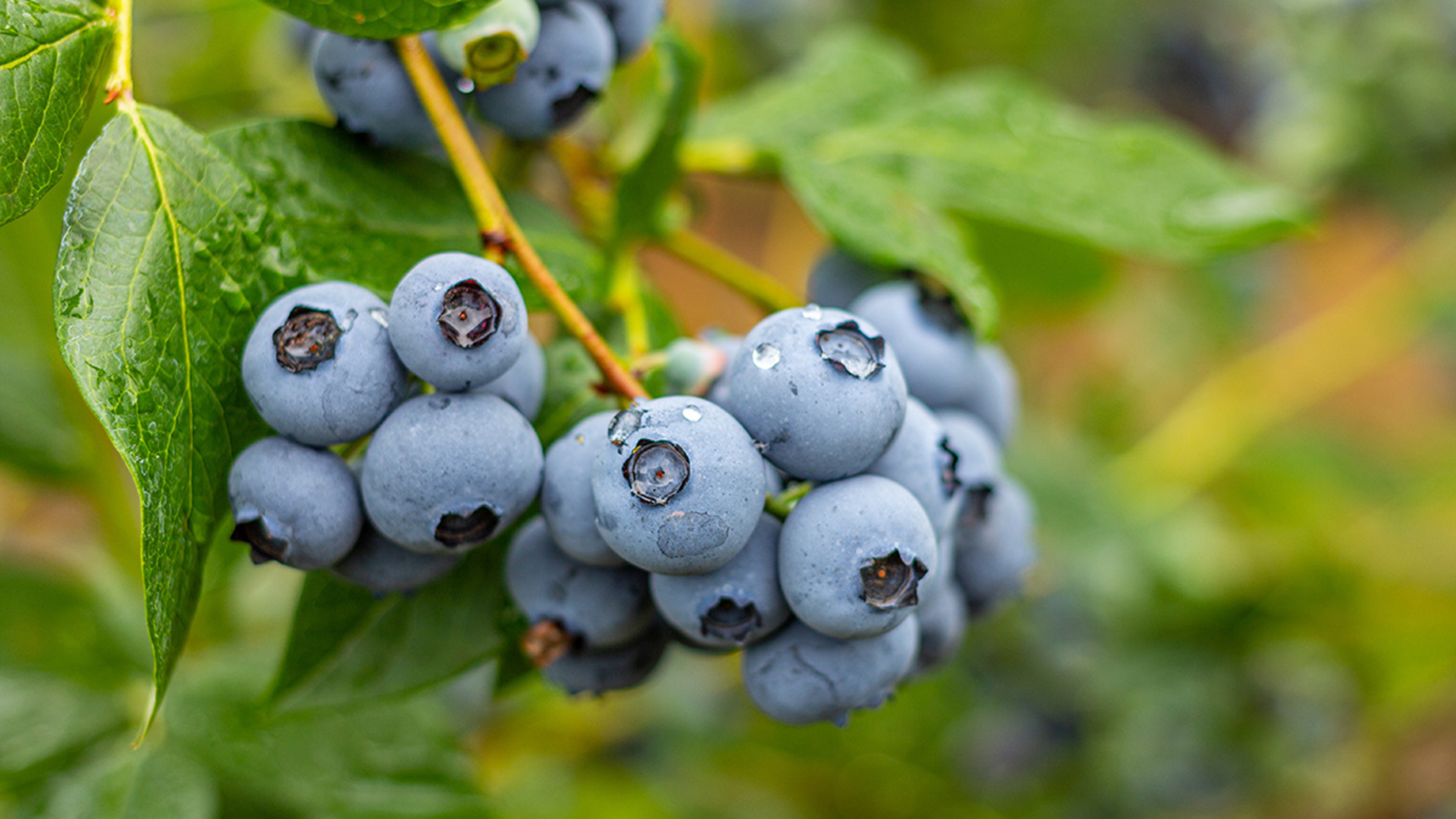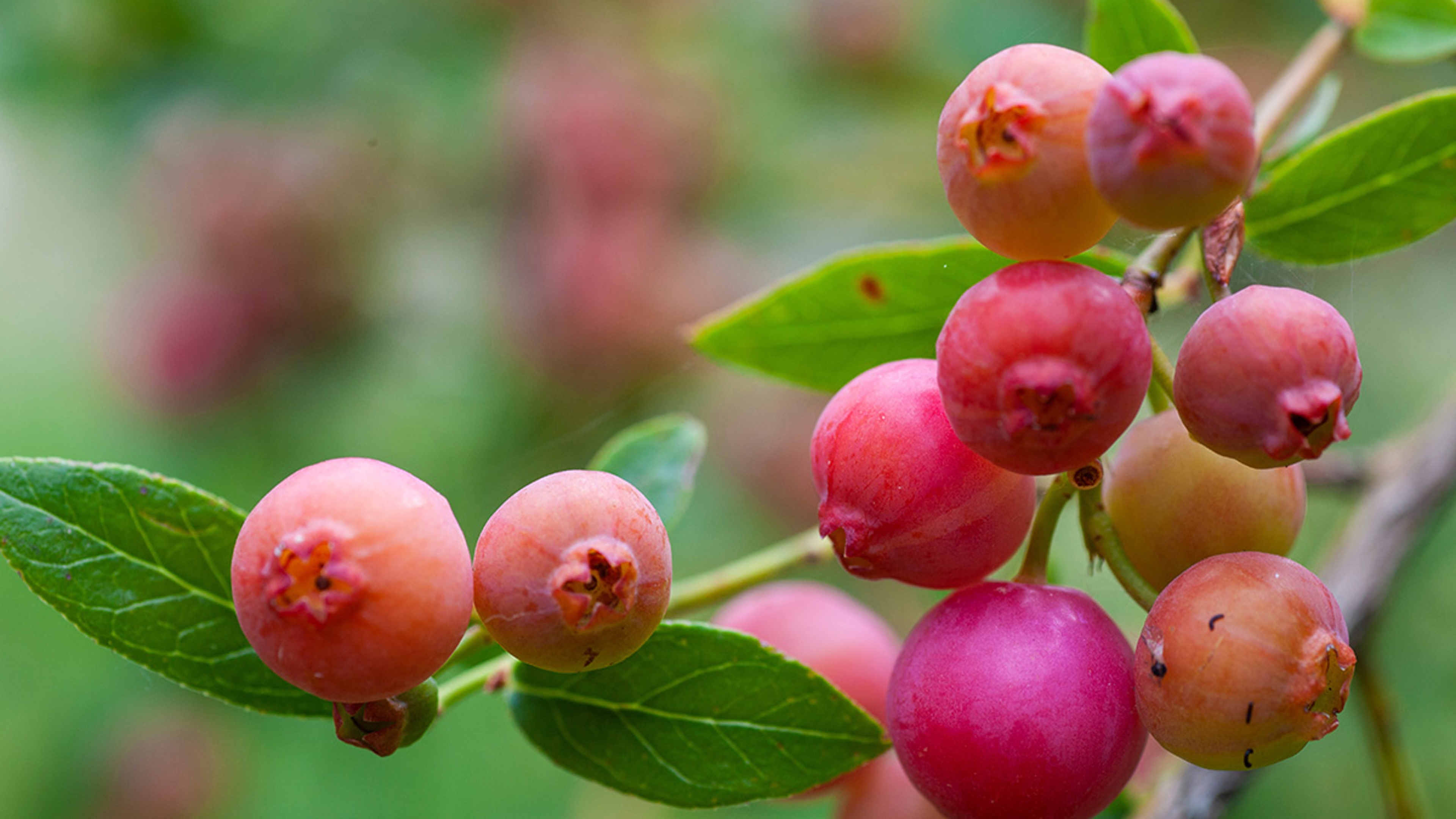5 Facts About Blueberries: How a Wild Berry Became a Modern Blue Behemoth
Even Violet Beauregarde would agree that these berries are true wonders.
Feb 22, 2022
Our series “Chew on This” serves up the flavorful history of food and how it has shaped the way we cook and eat today.
When it comes to versatility, foods beat the blueberry. These small, unassuming berries might not look like much on the outside, but beneath that bright blue peel hides a world of flavor, sweetness, and good nutrition.
In the kitchen, blueberries are a true culinary marvel. We eat them fresh, canned in jellies and syrups, squeezed in juices, or dried and served up in trail mixes or cereals. Blueberries are also a baker's best friend, whether they're being added to cookies, muffins, waffles, pies, tarts, bagels, candies, and dozens of other decadent treats.

Even the savory world is not immune to the allure of the blueberry, with the fruit popping up in salads, sandwiches, sauces, and even spicy salsas. Not bad for a berry that got its start in commercial farms just over a century ago.
Read on to learn some facts about blueberries, including where they grow, why some aren't even blue, and how to choose the ripest ones.
A true blue American
Blueberries are one of the few major fruits we eat today that are also indigenous to North America (others include raspberries, blackberries, and cranberries). Indigenous populations started harvesting wild blueberries in this country around 13,000 years ago. Back then, though, they called them “star fruits” or “star berries” because of the five-pointed star shape their blossom creates when they bloom.
Blueberries are classified into two major varieties: “highbush,” the plump, large berries we typically find in supermarkets today, and “lowbush” blueberries, which are smaller and sweeter, and most commonly used in juices, jams, and baked goods.
Washington, Georgia, and Michigan are the nation's top blueberry-producing states, showing that this crop can thrive in a variety of climates (though it especially likes areas with nutrient-packed, acidic, swampy soil). Another top grower of the berry is New Jersey (it is the Garden State, after all), and it is there where we find the small town of Hammonton — the self-proclaimed “blueberry capital of the world.” Boasting more than 50 blueberry farms in its surrounding area, Hammonton is home to an annual festival celebrating the brilliantly hued fruit.
A life well lived
Blueberry bushes can live a long time. Like, really long, according to Brian Bocock, vice president of product management for the California-based berry growers Naturipe Farms.
“If a blueberry plant is well taken care of, it can live 70 years or longer,” he says.
Most blueberry bushes, however, have a life span of 30 to 50 years. A single healthy blueberry plant can average more than 2,000 berries per season, meaning it can yield more than 100,000 berries over the course of its life.

Blueberry plants also thrive in groups. A single acre of land can be home to more than 1,500 blueberry bushes, which can produce more than 3 million individual blueberries a season, Bocock says.
Superfood alert!
Blueberries almost always top the list of the healthiest foods you can eat. One cup of the fruit has just 80 calories and 3 grams of fiber, making them a guiltless treat. They also contain some of the highest levels of antioxidants of any food — antioxidants that can help reduce the risk of heart disease and cancer and lower blood pressure, as well as soothe inflammation, boost immunity, enhance digestion, and even improve the overall health of your skin and bones.
Blueberries also appear to be good for a person's mental health. In one German study, researchers found that eating blueberries could help slow cognitive decline as people age. In another study involving researchers from Oman, India, and the United States, scientists found that eating blueberries regularly may help boost short-term memory as well as overall motor coordination.
Chase your blues away
When you're talking about food, there's not a lot out there you can call blue. In fact, outside of artificial drinks and candies, blueberries are pretty much it (unless George Carlin has anything to say about it).
“Blueberries are one of the only naturally colored blue foods that humans eat,” Bocock says.
The reason? A powerful group of substances called anthocyanins. These pigments give blueberries their color and also contain the antioxidants that make them so nutritionally superpowered.
But in a true mother nature mind-twister, while blueberries are one of the only “blue” foods out there, not all blueberries are blue.
“The pigment that makes blueberries blue can also be opaque or even tinted pink,” Bocock adds. “While berries with these pigments aren't blue,” he says, “they do have the same flavor and texture as traditional blueberries.”

To try these mutant berries, check your market or plant nurseries for “pink lemonade” or “Saskatoon” variety blueberries, both of which possess that unusual pink hue.
Blue's clues
When shopping for the best quality berry, look for firmness over size, Bocock advises.
“The first time you buy, size and overall appearance may win the day, but firmness and flavor create a repeat purchase,” he says.
In addition to firmness, check your berries' container for leaking juices or stains. These may be signs the fruit is overripe.
However, if you see a silver sheen on the berry, don't fear. That naturally occurring “bloom,” as it's called in the industry, is actually good. It's a sign the bush the blueberry came from was healthy. That waxy layer is actually a type of natural defense that helps protect growing fruit from insects and the elements.
.svg?q=70&width=384&auto=webp)







